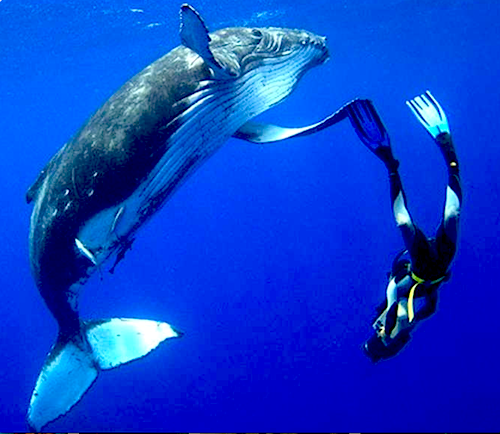|
|
Developmental Biology - Simple Rules Unite All Species
Deciphering Life's Equations
A new theory describes what all animals have in common, allowing for predictions about organisms by scientists...
Research led by the University of Arizona has resulted in a set of equations that describes and predicts commonalities across life despite its enormous diversity.
"Our study develops a general theory to study the extraordinary diversity of life using simple rules common to all species. We can further apply these rules to predict specific traits of species that we might know a lot less about."
Joseph Burger, postdoctoral fellow in Ecology and Evolutionary Biology, Institute of the Environment, Bridging Biodiversity and Conservation Science, University of Arizona.
Specific traits include the timing of an organism's reproduction and death - an organism's life history. Burger is lead author on a paper published in the journal Proceedings of the National Academy of Sciences (PNAS). His collaborators include scientists from Science and Technology at the Missouri University, and also from the University of New Mexico.
Whether you're as large as a whale or as tiny as plankton, whether you're a giant clam laying millions of eggs all at once or an elephant birthing a 250-pound calf, all species evolved to reproduce, grow, survive and replace themselves within universal biophysical constraints.
"When thinking about the enormous varieties of lifeforms, it would seem that life is very complicated and wouldn't be that predictable. But, if you impose these constraints on a mathematical model, certain unifying patterns fall out."
Joseph Burger
One constraint is demography. Regardless of the number of offspring produced in a lifetime, on average, only two survive to replace the parents. Another constraint is a mass to energy balance. Living things allocate energy to maintenain body, growth and reproduction — all of which must balance in a lifecycle.
Imposing these constraints explains two fundamental tradeoffs in how organisms reproduce:
1) a tradeoff between number and size of offspring and
2) a tradeoff between parental investment in offspring and their growth.
"What's so cool about these equations is that to solve them you only have to know two values:
1) the size of the offspring at independence and
2) the adult size.
If you plug that into the equation, you get the number of offspring an organism will produce in a lifetime and a myriad other life history characteristics."
Joseph Burger
To arrive at this new understanding of how organisms allocate energy to growth, reproduction and survival, Burger and his colleagues compiled published data on the life histories of a diverse array of wild animals in stable populations.
Their new theory refines old understandings about life history tradeoffs. Past assumptions were that offspring size and number increased or decreased at the same rate. For example, elephants have relatively large calves, so they have few in a lifetime, while tuna produce millions of tiny eggs. It turns out that the relationship is not so straightforward, a realization that inspired Burger's work.
"We now need to put these equations to practice by developing user-friendly programming tools, collaborating with field scientists refine ecosystem models and informing management decisions."
Joseph Burger
Significance
Data and theory reveal how organisms allocate metabolic energy to components of the life history that determine fitness. In each generation, animals take up biomass energy from the environment and expend it on survival, growth, and reproduction. Life histories of animals exhibit enormous diversity—from large fish and invertebrates that produce literally millions of tiny eggs and suffer enormous mortality, to mammals and birds that produce a few large offspring with much lower mortality. Yet, underlying this enormous diversity are general life history rules and trade-offs due to universal biophysical constraints on the channels of selection. These rules are characterized by general equations that underscore the unity of life.
Abstract
The life histories of animals reflect the allocation of metabolic energy to traits that determine fitness and the pace of living. Here, we extend metabolic theories to address how demography and mass–energy balance constrain allocation of biomass to survival, growth, and reproduction over a life cycle of one generation. We first present data for diverse kinds of animals showing empirical patterns of variation in life-history traits. These patterns are predicted by theory that highlights the effects of 2 fundamental biophysical constraints: demography on number and mortality of offspring; and mass–energy balance on allocation of energy to growth and reproduction. These constraints impose 2 fundamental trade-offs on allocation of assimilated biomass energy to production: between number and size of offspring, and between parental investment and offspring growth. Evolution has generated enormous diversity of body sizes, morphologies, physiologies, ecologies, and life histories across the millions of animal, plant, and microbe species, yet simple rules specified by general equations highlight the underlying unity of life.
Authors
Joseph Robert Burger, Chen Hou and James H. Brown.
Acknowledgments
J.R.B., C.H., and J.H.B. contributed equally to this work.
The authors declare no competing interest.
Return to top of page.
| |
|
Jan 6 2020 Fetal Timeline Maternal Timeline News
 All species have evolved to reproduce, grow, survive and replace themselves within universal biophysical laws. Here a humpback whale calf swimming off Toku, Vava’u, Tonga. CREDIT Film maker Roger Munns. No Copyright Infringement intended.
|



